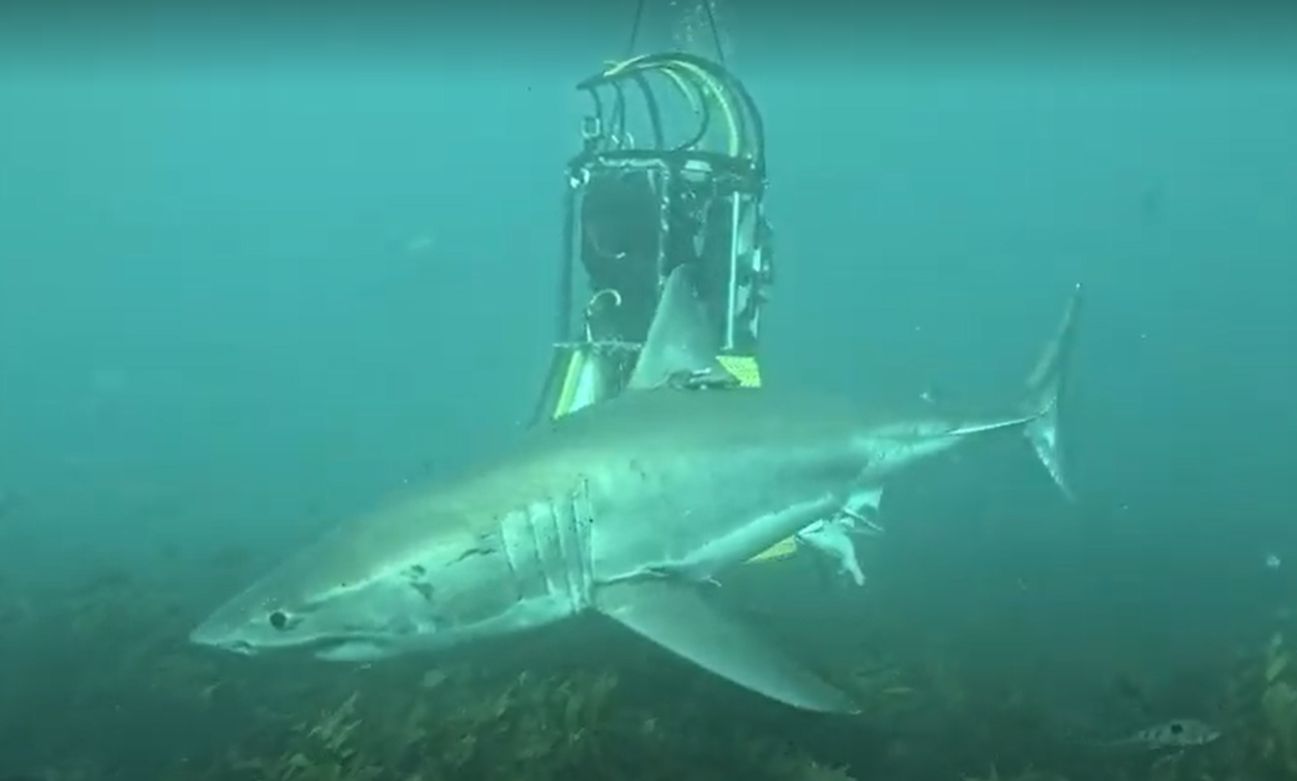
By Sunny Whitfield FRGS FAWM FHEA FACPara RP WEMT
'My role on this expedition is a unique example of the growing list of opportunities for registered paramedics.'
I came up with the concept of this article while I was kneeling on the sandy ocean floor attempting to hold my position in one place. But the neutral buoyancy and the ever-so-slight underwater current made my lame attempt to hold myself in one place somewhat challenging and I kept drifting backwards.
Just in front of me is my partner Dan, a cinematographer filming for Discovery+, and just in front of Dan are three great white sharks. Not the average variety either. These white sharks are enormous. The problem (apart from trying to hold my position) is that just before we left the safety confines of the cage, I counted five white sharks. Now we are missing two of them. Interestingly, this is a paramedic shift.
Paramedicine underwater
My job on this expedition is somewhat varied but I am going to do my best to explain the role of an expedition paramedic. To be clear, my main role is to act as the crew paramedic, but my role doubles as an underwater medic (only basic care underwater), topside dive medic (gets technical), and rescue swimmer. But that’s the clinical aspects of the role. The role also requires doubling as a cage technician, shark wrangler, camera assistant, pole camera, gaffer, safety spotter and official lunchbox carrier.
Although this particular dive with Dan was not deep or technical in nature, it was planned to capture some shark behaviour which comes with some risk. But due to the bulky nature of the cinematic camera and dive gear, Dan can only really look one way, forwards. His peripheral vision is also blinded while he aims to capture the perfect shot.
That’s where I come in. As the crew paramedic, I double as the safety diver, which means I am the cameraman’s peripheral vision and I maintain underwater comms with the topside crew through full face mask. Coupled with that, I am responsible for the dive profile including the maximum depths, the ascent rates, and the dive times.
I carry a shark shield (every diver has one attached to them) but they are not switched on because at this moment we want to attract the sharks (stupid right? It gets worse.) If the shark’s mood changes, we switch them on … yep. Can you imagine asking a great white shark to chill out while I find the on switch. Shark shields may work, but just in case that fails I also carry a shark wand. A shark wand is a very technical name for what is essentially a wooden stick with PVC housing used to fend off a curious shark (it would be no use in fending off an angry shark).
Paramedic topside
Back on top of the water (topside), the crew rotate through positions to manage fatigue and dive intervals. This means that when I am topside, my role changes as soon as our dive gear is reset. Topside, I am primarily responsible for the health and safety of our crew. This includes their wellbeing, hence every morning I have made it my responsibility to get the lunchboxes. The medical kits are fairly comprehensive and hold all of the emergency medicine capability you would expect with added primary healthcare interventions due to long evacuations.
But being on a vessel with limited space means everyone fills multiple rolls. When not managing medical complications or health and safety, I am also a deckhand, cage wrangler and underwater comms operator. And this folks is the reality of being a paramedic working on a marine/dive expedition. It’s an exciting and evolving part of paramedicine.
The expedition
This particular expedition has taken our crew of twelve souls several thousand kilometres off the Australian coast where there is no easily accessible health service or hospital. We are way past the point of helicopter evacuations, which means if we suffer an unfortunate event, there will be a very long evacuation time. This creates a very dynamic role for a paramedic but one that I repeatedly pinch myself that I get paid to do. Our crew is located in the middle of the ocean in rough seas and sub-zero temperatures, and I’m diving with scientists, film-makers and, most importantly, megafauna.
Back to our current situation, we were now missing two white sharks and the ones we could see were starting to get aggressive with each other. Dan and I made eye contact and we both nodded in acknowledgement. This situation was no longer safe so we returned to the cage to begin our ascent.
Non-traditional role expansion
When I became a paramedic, I figured that I was destined for the street life of an ambulance crew. But the professionalisation of paramedicine has led to the diversification of the paramedic role. My role on this expedition is a unique example of the growing list of opportunities for registered paramedics to fill.
Paramedics working within expeditionary roles quickly find there exists a dramatic difference from the more traditional ambulance roles. Paramedics on expeditionary teams are a highly visible member of the leadership team and are often required to practice outside of the “silo” of healthcare, which is paramount in further developing the role of the expedition paramedic. If we put the clinical aspect of the role of paramedic aside, you find that a paramedic on an expedition must also be able to work proficiently in logistics, administration, risk management and expedition planning.
Parting word
While expedition medicine is a rapidly evolving field in the healthcare sector, several sub-specialities of expedition medicine are also emerging. Mountain medicine, altitude medicine, desert medicine, tropical medicine, ocean medicine, alpine medicine, diving and hyperbaric medicine.
I have been fortunate to work in almost every sub-speciality thanks to a unique set of what I call non-clinical technical skills. These sub-specialities all require elements of emergency and primary healthcare, but each requires the clinician to possess non-clinical professional and technical skills such as diving, sailing, climbing, rappelling, etc., which brings me to one piece of advice to paramedics who seek expeditionary experiences: Go out and learn a non-clinical professional skill. These skills linked with your paramedicine qualifications will make you a tremendous asset to an expedition team and you to will pinch yourself when you’re being paid to explore the Himalayas, cross the Gobi Desert or dive with white sharks. This is by far one of the most exciting aspects of professionalising paramedicine, but it is not taught in university.
Keen to know more, check out www.exploramedicine.com.au. You can also contact Sunny at sunny@exploramedicine.com.au.
Adapted from an article originally published in The Shift Extension

Get unlimited access to hundreds of ACP's top courses for your professional development.
Join Now